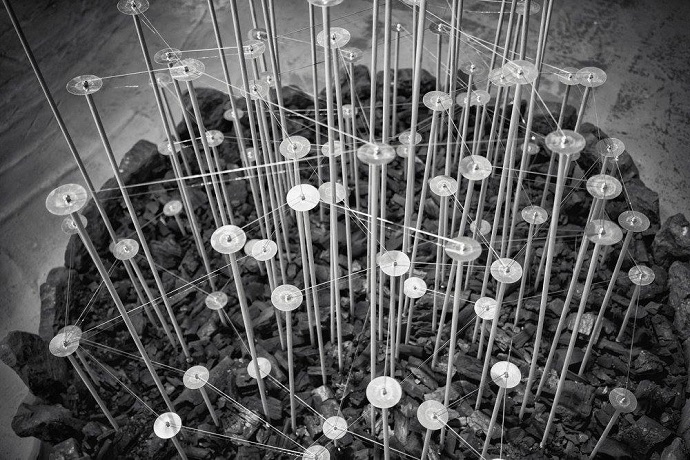
Photo: Janto Rößner
Various venues, Hamburg
Since 2006 the Blurred Edges festival has been drawing connections between disparate scenes of contemporary music in Hamburg over two weeks each summer. Experimental, electronic, improvised and classical are gathered under the umbrella term ‘Aktuelle Musik’, denoting current music, whether that be in composition or performance.
This year’s festival features nearly 50 events held over 16 days in venues across the city. At a pop-up art space in the festival’s second weekend, promoter Stark Bewölkt brought music by Hamburg’s resident avant-gardist Michael Maierhof together with international improvising artists and contemporary classical works.
Italian duo Giuseppi Ielasi and Enrico Malatesta presented a meditative improvisation for homemade percussion – odds and ends of wire and sandpaper – and electronic mixing board, which was indebted to Japanese onkyō music (the art of doing very little, incredibly quietly). Norwegian percussion trio Pinquins performed works including Thierry de Mey’s Musique de tables. In near darkness, three desk lamps illuminated three polystyrene blocks. The trio, in perfect synchronicity, swiped, slapped and stamped the blocks in insistent interlocking rhythms, playing the parts of insane, officious bureaucrats.
For Blurred Edges co-founder Gregory Büttner, the festival provides an opportunity to blur the edges between ghettoised new music scenes. It also provides a platform for artists crossing the boundaries between art forms. A late-night event at HAW University’s media technology laboratory was a mixed-bag offering by students at the city’s music school, exploring the possibilities of multimedia technologies.
Alessandro Anatrini’s Le nubi le aduna una mano più forte for piano and live electronics was a sophisticated duet for a pianist and her electronic shadow. Stefan Troschka went further, and utilised light-sensitive material to control sonic parameters in Licht ins Dunkel. Five large, white discs were placed in front of the audience and wired up to Troschka’s laptop. The torchlights of the Electric Light Quintet played teasingly over the discs, twisting the fabric of Troschka’s composition.
Licht ins Dunkel was essentially a collaborative improvisation, more about the possibilities of the medium than the creation of an exceptional artwork. Regardless, my head spun with the creative potential of light and sound. ![]()